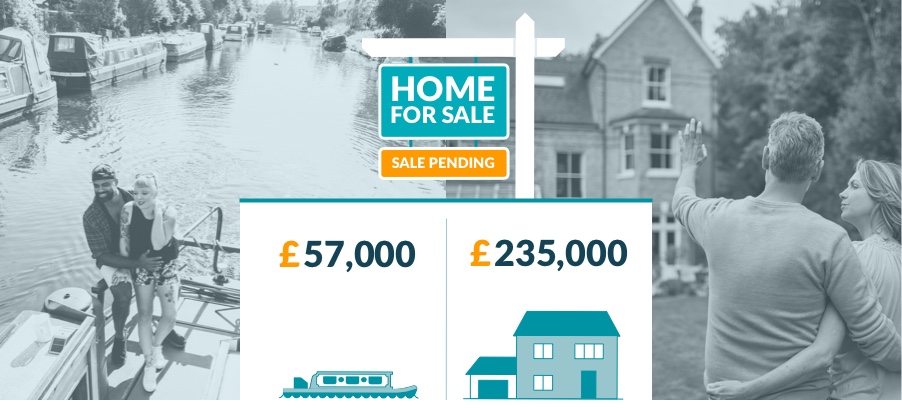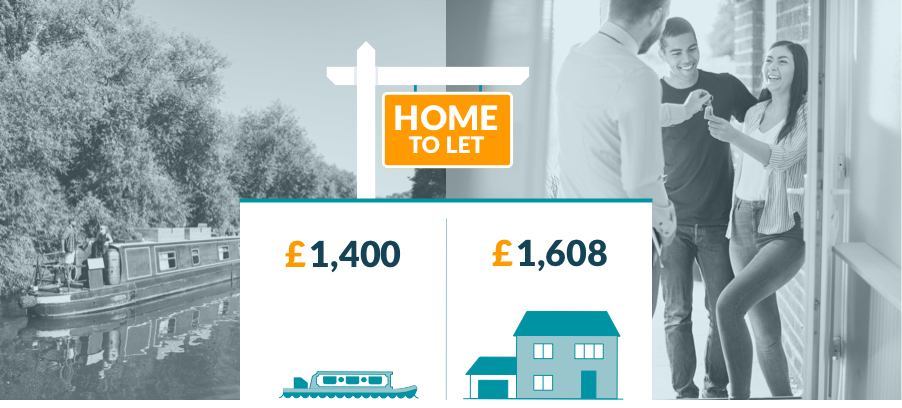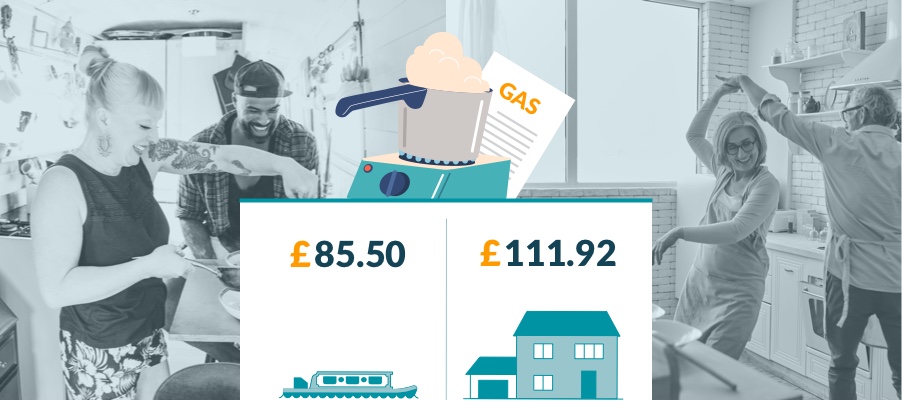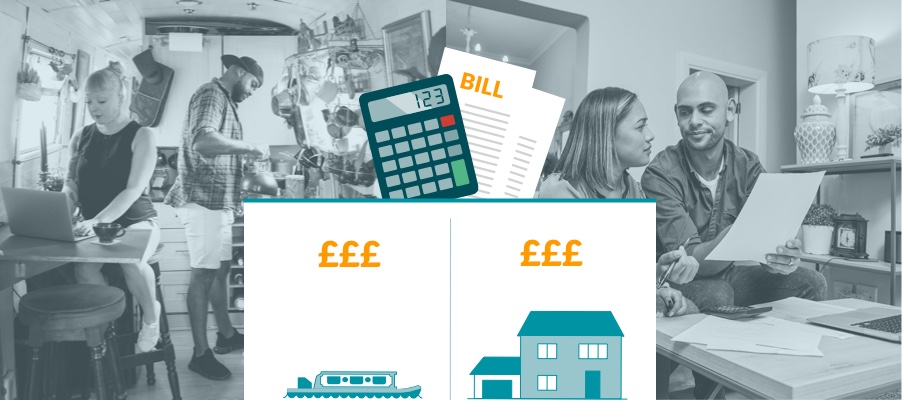As cost-of-living prices soar, alternative living arrangements are becoming more attractive than ever. With the cost of buying a narrowboat 75% cheaper than buying a house in today’s market, it’s no wonder many are turning to a life on the UK’s waterways to keep costs down. But how frugal is the boating lifestyle really?

Based on a 3% mortgage rate, the average price of buying a house in the UK worked out to be 75% more expensive than a narrowboat.
However, with mortgage rates climbing even higher to 6%, the highest they have been in since 2008, it’s even more difficult for new buyers to see themselves in a position where they could feasibly own their own property.
Buying a traditional house also comes with added costs such as:
Though narrowboats may not be the cheapest, they are considerably more affordable than traditional bricks and mortar. Specialist mortgage providers also exist for boats, such as Promarine Finance, making them even more attractive to buy.

At 15% cheaper, renting a narrowboat probably looks very appealing to current UK renters.
Predictions suggest rental costs could rise by another 4.5% over the coming months. Combined with the current cost of living crisis, many would be unable to stay above the bread line if things continue down this route.
Another perk to renting a narrowboat, is the length of term. We’ve based our research on a long-term three-month rental. However, narrowboats can often be rented from just one week.

Saving on energy has been a hot topic in 2022, with costs increasing due to a rise in wholesale gas prices.
Homes come with significant costs for gas and electric, needed for cooking, heating and generally running the home.
Narrowboat energy bills are significantly cheaper, at 25% less than your average home. Unlike a traditional house, narrowboats are often heated by multi-fuel stoves, which take both coal and wood. Alongside this, many are kitted out with solar power, which generates most of the power during the summer months.

Following the lockdowns of the Covid pandemic, many of us have adopted hybrid, or remote working, which favours the narrowboat lifestyle.
If you aren’t tied down to one place, then you’re able to continuously cruise. This means you are not subject to mooring fees, and therefore do not need to pay council tax.
*However, if you are looking to moor up fees can range depending on where you choose and you will need to pay the local council tax too.
On average, for three months over the winter, you may be looking at £900 total to moor your boat. Though in a traditional home you would be looking at approx. £570 total in council tax payments for 3 months, when adjusting the other costs against a traditional home, this may not be too much of a sacrifice.

Running costs
In a traditional home, there are other running costs to consider such as water and travel. Unlike with a narrowboat which can sail you around the waterways of the UK, many who own a traditional home will need to fuel a petrol or diesel car.
Insurance
Home insurance can set you back £191 annually. With a narrowboat on the other hand this cost is significantly smaller — you can quickly get an online quote with Insure4Boats.
Living on a narrowboat is clearly a cheaper alternative to living in a traditional bricks and mortar. However, it’s not without its sacrifice and compromise. For those who are happy to commit to an alternative, continuously cruising lifestyle, this could be the way forward to beating the soaring cost-of-living.
To receive exclusive offers from Insure4Boats and the Ripe Group plus the latest boating news and information, please complete your details below.
Please enter a valid email address.
Please select your boat type.
Please confirm your preferences by selecting from the options below.
Your data is safe with us and you can unsubscribe at any time. For more information, please see our Privacy policy
We also work with a few, carefully selected retail and leisure partners. Please click below if it’s ok for us to send you offers and information from these partners from time to time.
Thank you for subscribing, you'll be hearing from us soon!